
- Home
- Workshops / Tours
- Diary / Blog
- Galleries
- Foreign Trips
- Tasmania 2016
- NE Queensland 2016
- Western Alps 2016
- NE Spain 2016
- Australia's Wet Tropics 2015
- Australia's Top End 2015
- SW Australia 2015
- Switzerland 2015
- Andalucia 2015
- Belize 2015
- Australia 2014
- Switzerland 2014
- Belize 2014
- Bahama Islands 2014
- Switzerland 2013
- Ecuador 2012-2013
- Florida 2011-2012
- Vancouver Island 2011
- Australia 2010
- Peru 2008
- Bulgaria 2007
- Lesvos 2006
- California 2006
- New Zealand 2005
- Extremadura 2005
- Goa, India 2004
- The Gambia 2003
Ecuador
19th December 2012 - 20th January 2013
Buenaventura
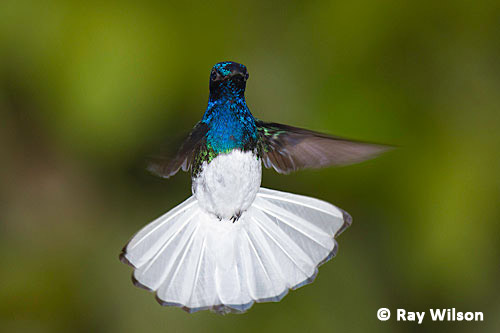
White-necked Jacobin (Florisuga mellivora)
Buenaventura, in the humid forests of the southwestern lowland hills, is another reserve owned and operated by the Jocotoco Foundation.
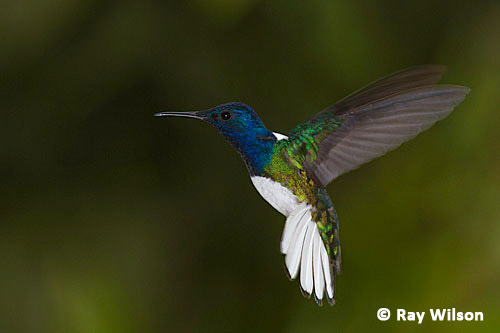
White-necked Jacobin (Florisuga mellivora)
The first thing you notice when arriving at the lodge is the spectacular number of hummingbirds visiting the feeders and it is not unusual for about 100 individuals to be present! The most abundant species were White-necked Jacobin and Brown Violetear which together made up the majority of the birds, while Green-fronted Brilliant, Green Thorntail, Violet-bellied Hummingbird, Rufous-tailed Hummingbird, Andean Emerald and Green-crowned Woodnymph made up the supporting cast in rough order of abundance.
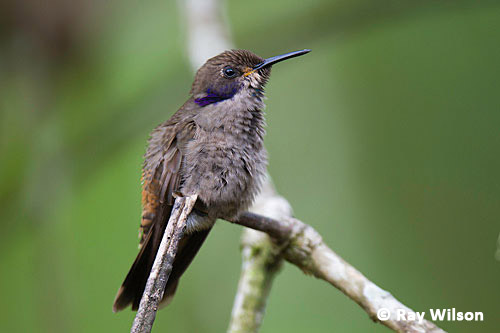
Brown Violetear (Colibri delphinae)
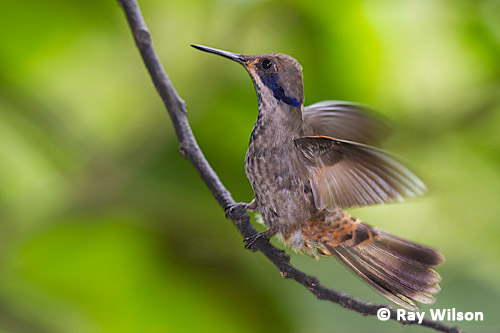
Brown Violetear (Colibri delphinae)
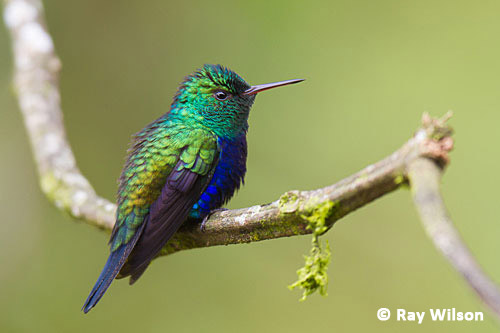
Violet-bellied Hummingbird (Damophila julie)
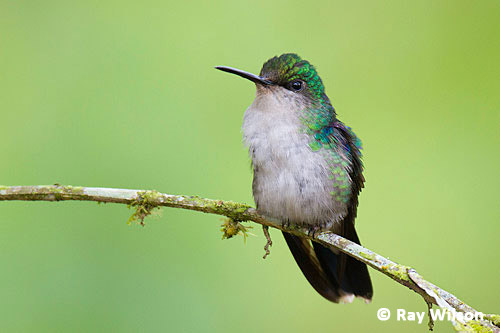
Andean Emerald (Amazilia franciae)
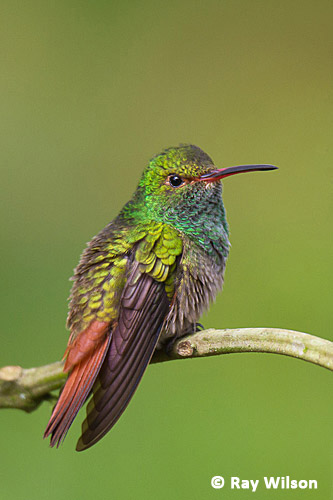
Rufous-tailed Hummingbird (Amazilia tzacatl)
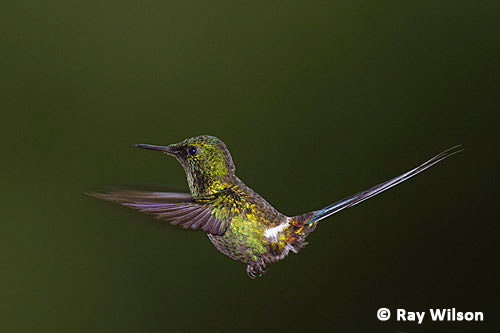
Green Thorntail (Popelairia conversii)

Green Thorntail (Popelairia conversii)
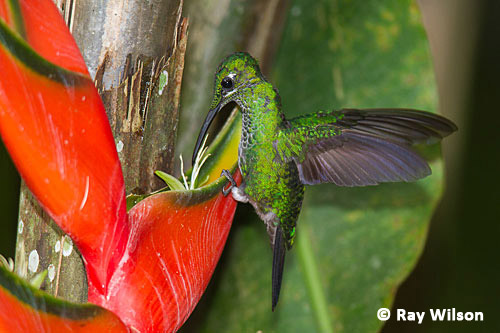
Green-crowned Brilliant (Heliodoxa jacula)
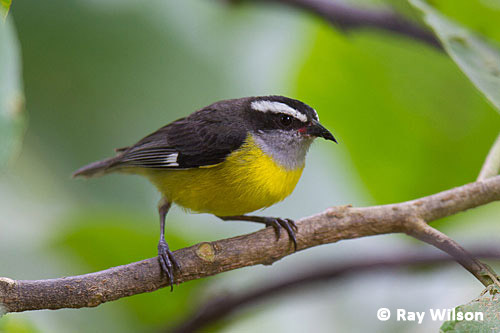
Bananaquit (Coereba flaveola)
Large numbers of Bananaquits and Green Honeycreepers were also attracted to the copious supply of sugar water in the hummingbird feeders.
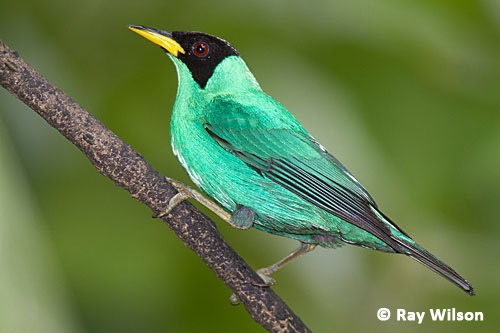
Green Honeycreeper (Chlorophanes spiza)
Also beside the lodge, a fruiting tree was a magnet for a range of frugivorous birds...
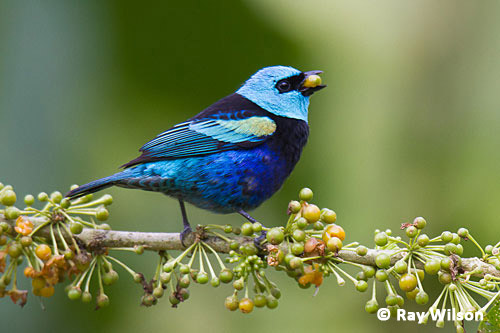
Blue-necked Tanager (Tangara cyanicollis)

Lemon-rumped Tanager (Ramphocelus icteronotus)
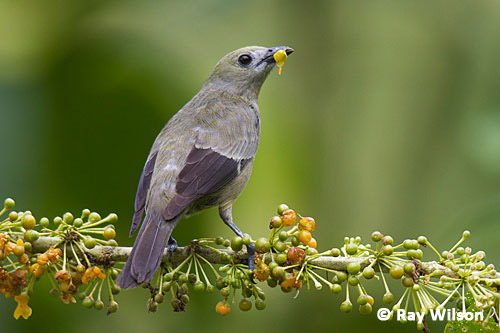
Palm Tanager (Thraupis palmarum)
The race of Blue-grey Tanager residing on the Pacific coast lacks the striking white wing-bars that are present on the subspecies I saw at Copalinga.

Blue-grey Tanager (Thraupis episcopus quaesita)
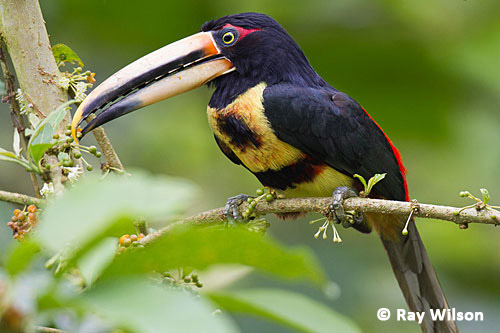
Pale-mandibled Aracari (Pteroglossus erythropygius)
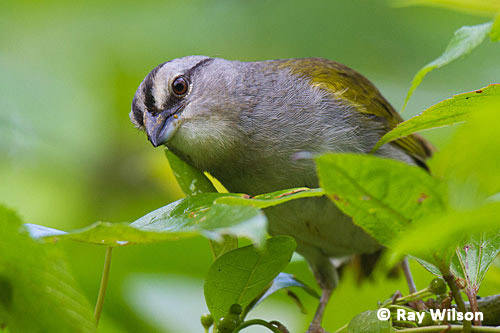
Black-striped Sparrow (Arremonops conirostris)
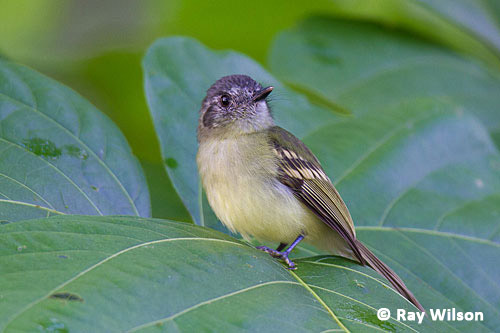
Slaty-capped Flycatcher (Leptopogon superciliaris)
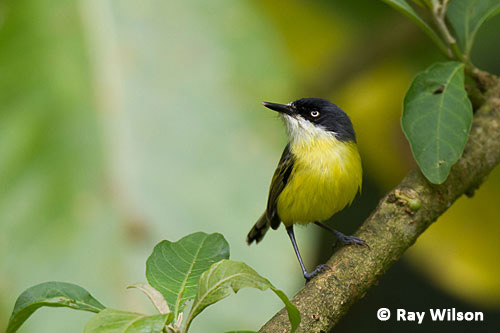
Common Tody-flycatcher (Todirostrum cinereum)
Rufous-headed Chachalaca were a lot shier than most of the visitors to the feeders and only visited when it was quiet and there were not too many people around.
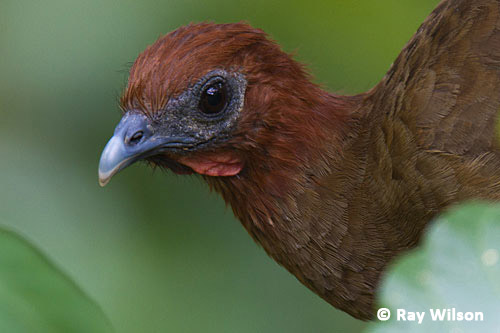
Rufous-headed Chachalaca (Ortalis erythroptera)
An even shier species is the the Brown Agouti. Even the slightest of noises or sudden movements would send this large rodent scurrying back into the dense undergrowth of the forest.
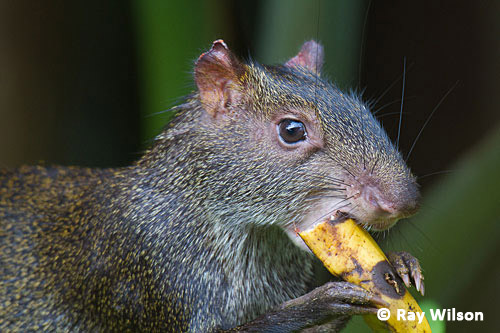
Brown Agouti (Dasyprocta [punctata] variegata)

Brown Agouti (Dasyprocta [punctata] variegata)
Buenaventura is probably one of the easiest places in the world to see the bizarre-looking Long-wattled Umbrellabird. This large crow-sized Cotinga has a lek about a 2km walk from the lodge, but even when you know where to look they are not easy to see in the dark understorey. The long, thick wattle hanging from its throat is inflatible and when the bird is displaying the wattle can be extended up to 30cm (1ft) downwards.
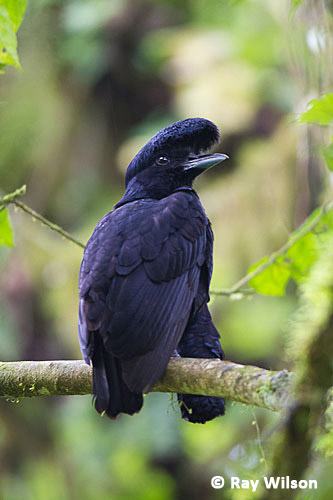
Long-wattled Umbrellabird (Cephalopterus penduliger)
On the way back to the lodge, I came across a 1m (3ft) long Cope's Vine Snake crossing the main track. This harmless snake was no thicker than a finger-width along the entire length of its body and when it was disturbed or felt threatened it adopted a stiff posture with its tongue protruding rigidly from its mouth in an effort to look as much like a vine or dead branch as possible.
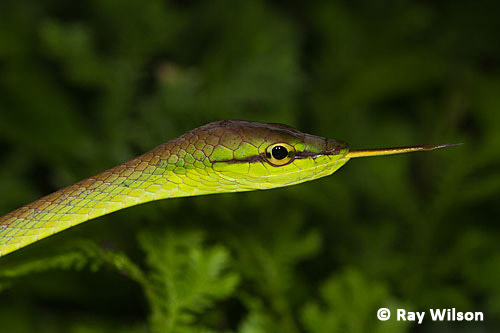
Cope's Vine Snake (Oxybelis brevirostris)
Anthony's Poison Arrow Frog was quite common along the main track. The skin secretions of this species are less toxic than those of poison arrow frogs from the genus Dendrobates and Phyllobates but a few of the compounds are under investigation for possible medical use as non-opioid painkillers. One of these, Epibatidine, has been reported to to have an analgesic effect over 200 times more potent than morphine although, in its native form, it is also toxic in low doses due to an affinity for various nicotinic acetylcholine receptor subtypes. Research is currently underway to attempt to develop derivatives of Epibatidine which maintain its analgesic efficacy without the toxic side-effects.
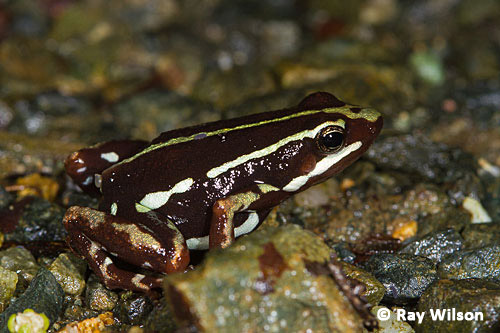
Anthony's Poison Arrow Frog (Epipedobates anthonyi)
In the evenings, several large moths were attracted to the lights of the dining area, including the spectacular Rothschild's Silk Moth.
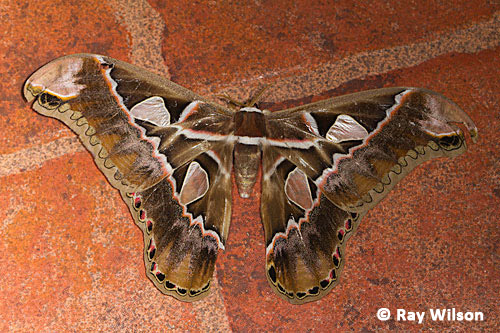
Rothschild's Silk Moth (Rothschildia aricia)
As with all the other lodges I visited, the trails were narrow and enclosed with dense vegegation, making photography extremely difficult. Despite the difficulties it is still worth persevering if you have the time and energy as a proportion of the wildlife you may encounter in the deep forest does not venture into more open areas very often.
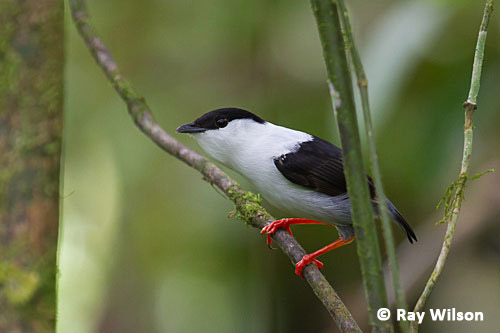
White-beared Manakin (Manacus manacus)
I heard evidence of White-bearded Manakin lekking sites at 3 different locations while walking the trails at Buenaventura but even when you know an active lek is close, getting a clear view in the dense undergrowth of the forest is not easy and it took a lot of patient waiting before a male hopped up onto a relatively clear perch for the photo above.
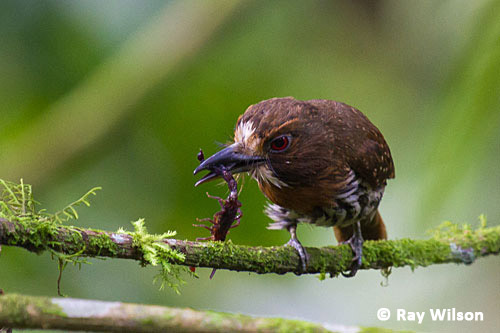
White-whiskered Puffbird (Malacoptila panamensis) eating a scorpion
On another trail, in a small ravine, I came across a roving feeding flock that comprised of at least 15 species. The stars of the group were a White-whiskered Puffbird bashing a scorpion against a branch for about 5 minutes before flying off deeper into the forest with its meal, and some excellent views of a Chestnut-backed Antbird as it skulked around the dark depths of the dense vegetation of the forest floor. Although the latter species is fairly common, its secretive habits mean it is rarely seen well.
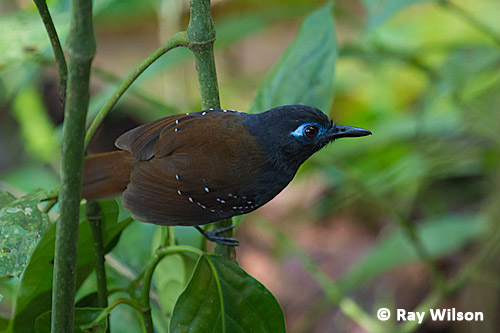
Chestnut-backed Antbird (Myrmeciza exsul)
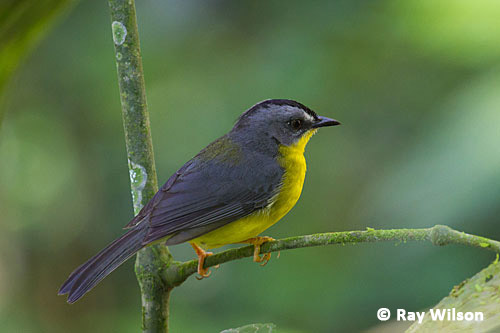
Grey-and-gold Warbler (Basileuterus fraseri)
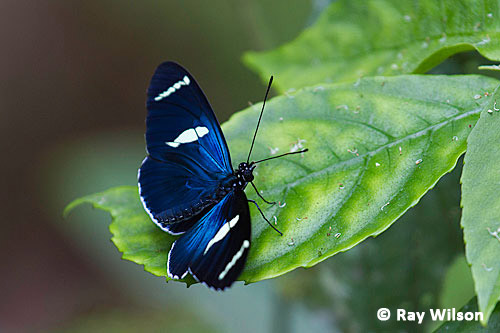
unidentified butterfly (Nymphalidae sp.)
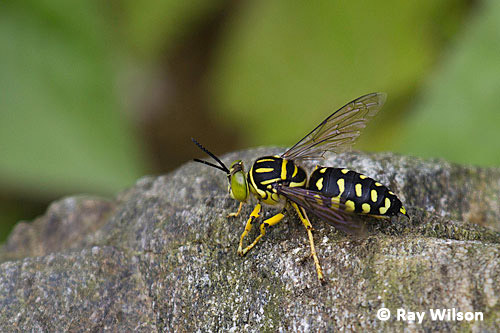
wasp sp. (Hymenoptera)
Barred Hawks were seen quite regularly overhead through breaks in the trees when walking down the main track. This one flew directly over my head only about 10m above me.
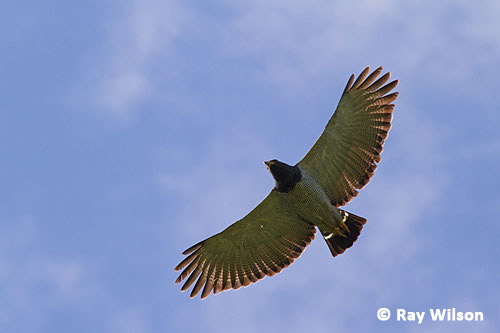
Barred Hawk (Leucopternis princeps)
When I was waiting on the taxi to pick me up to take me to Santa Rosa airport, a Chestnut-mandibled Toucan flew into the tree beside me and started feasting on the fruit! What a fantastic way to end the southern leg of my tour of Ecuador!

Chestnut-mandibled Toucan (Ramphastos swainsonii)
| Jorupe | Yanacocha |
Ray Wilson owns the copyright of all images on this site.
They may not be used or copied in any form without prior written permission.
raywilsonphotography@googlemail.com